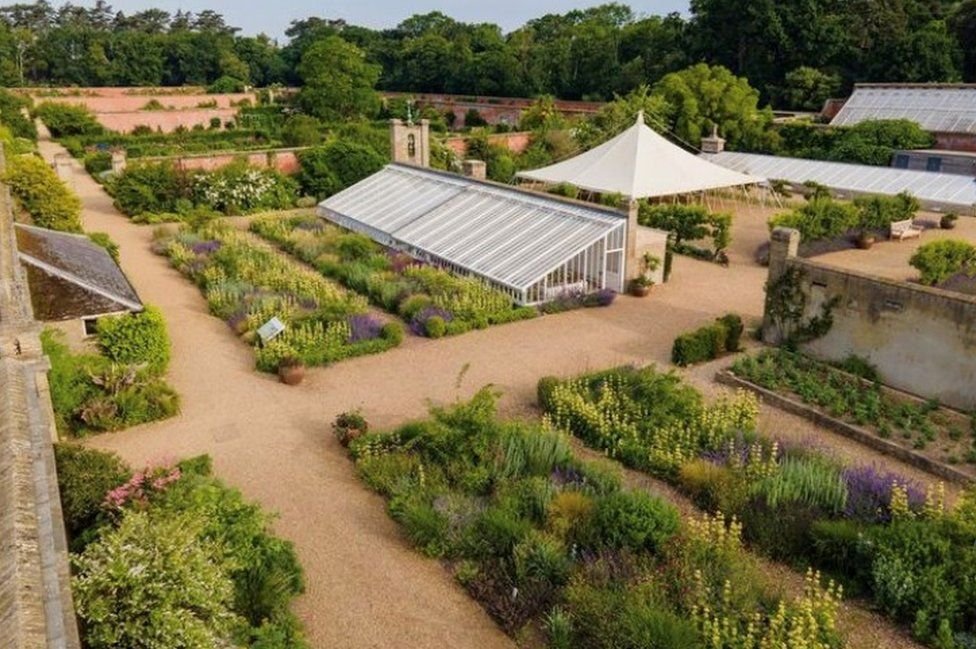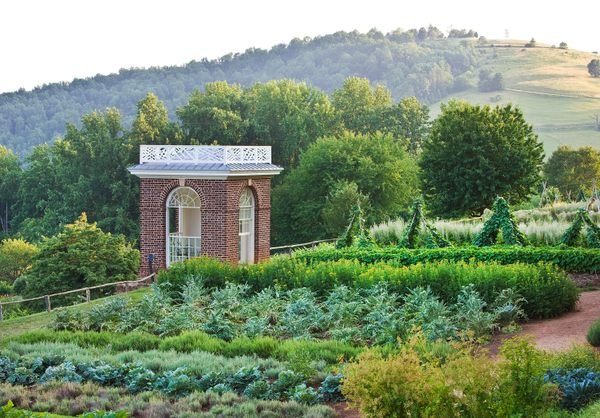Functional Beauty: A Brief History of the Kitchen Garden
by grace roberts
Few things combine form and function better than the kitchen garden. The unorganized growth of the natural world molded into place by efficient human design is not often looked upon as art, but rather as conquest. Yet this statement has never rung true in the garden, where supply and demand are augmented by genuine beauty from each party. Foregoing the traditional hierarchies of high and low art, consider the kitchen garden in a league of its own, bringing beauty into the necessities of the everyday.
Traditionally, kitchen gardens are straightforward in both their etymology and their function. Often called a potager, from the French “jardin potager,” or kailyard, from the Scottish “cabbage yard,” the kitchen garden is precisely what its name would imply. Providing plants from herbs to full size vegetables, the garden is ergonomically designed to produce edible crops year-round. From a simple herb garden to a seasonal rotation of vegetables, kitchen gardens have long been the overlooked relative of the ornamental garden, borne more out of necessity than desire for aesthetic excellence. There are little expectations that extend beyond one’s own needs; perhaps your go-to meal is a roast chicken with rosemary, or a kale salad, or a mint cocktail. The garden provides these ingredients and more. But beyond its roots in practicality, the kitchen garden has developed over centuries to become an art and a true testament to the intersection of form and function.
The Walled Garden at Holkham Hall, Norfolk, restored in the last couple years.
Present as far back as the Middle Ages, the kitchen garden was originally used as a space to grow medicinal herbs and plants, or else dye plants to be used for coloring clothing or fabrics. During the Renaissance, they continued to be used in the domestic space, rather than the pleasure space their ornamental garden counterparts occupied, but royals like Louis XVI were said to have a great interest in showing is guests the potager du roi at Versailles, which was designed in such a way that it reflected the great architecture and plot-planning of his gardeners.
The potager du roi at Versailles
Before him, most owners had chosen to tuck away their small vegetable plots, seen as a location for labor, whereas the extensive fruit trees or rose bushes were a sign of luxury and opulence. Apparently, snap peas and radishes did not have the same effect. Especially in Britain, where estate owners were wealthy, often of royal blood, and received visitors daily, most kitchen gardens were hidden behind walls or set so far back from the house that it would be quite the trek if a cook suddenly needed a sprig of thyme. Meanwhile in the colonies, estates like Monticello, owned by Thomas Jefferson, had extensive vegetable gardens too, built on the side of hills and working to ward off the rocky soil native to areas in the Northeast and Mid-Atlantic areas. Most of their growth was done out of intellectual and aesthetic motivation, as their wealth meant they could afford to obtain ingredients elsewhere. But already, kitchen gardens had begun to represent something crafted with aesthetics in mind once gardeners had mastered the proper engineering of the space.
The architecture of the kitchen garden was essential for its productivity. High brick walls were essential for keeping out pests, wind, and frost, while raised beds allowed the soil to be controlled and drained properly. They also allow for easy three-hundred-sixty-degree access without needing to bend over further or kneel to plant or harvest. From carefully selected cover crops, like clover, to maximize the nutrients in the soil during another crop’s off-season, to companion planting carrots and leeks, every plant’s placement is deliberate to maximize the health and wealth of production. Between the clean lines of raised beds and marigolds peeking out from behind clouds of herbs, it reads not unlike an art installation. The true art of the kitchen gardens is the reminder it provides: there remains beauty in the necessary. How lucky are we to consider making something functional, beautiful, too?
The vegetable garden at Monticello, Virginia.
During the first and second World Wars, kitchen gardens became essential elements of the home front. Planting “Victory Gardens,” a term popular in the United States and Britain, was a common way for families to support their communities and contribute to wartime efforts. Always rooted in self-sufficiency, typical kitchen gardens provided vegetables like carrots, tomatoes, potatoes, and other root vegetables which could be preserved, stored, and transported or sent to troops or bases. They were also essential for the image of growth and green they provided for propaganda, in a time where destruction and desolation permeated the news, yet again acting as a prime example of aesthetics and application.
But for all their popularity, post-war society voided much of the kitchen garden’s pertinence, becoming largely lost in the shadow of markets, grocers, and food delivery services, while population increase and city-planning eradicated much of the land needed for gardening. The art lost out to the preservation of estates and ornamental gardens, which were favored as attractions. In the 21st century, the kitchen garden has only recently experienced a renaissance, especially during the several phases of lockdown initiated by the Covid-19 virus. Seed catalogs sold out for the first time in decades—global turmoil inspired those at home to seek self-sufficiency and community through gardening once again, as outdoor spaces became safer options for people to gather.
Much of this resurgence in popularity is driven by a new generation of gardeners focused on restoration—in much of Britain, estate gardens had been neglected or else kept on the edges of being intact, until a resurgence of interest in functional gardening emerged. Consider the numerous restaurants which boast organic or farm-to-table produce, or the historically preserved estates which utilize food grown in their kitchen gardens for their cafes and shops. The Ballymaloe Cookery School in Ireland, for example, boasts hundreds of acres of gardens, but it is their Potager Garden which is most essential to their work. A culinary institute which offers courses year-round necessitates fresh ingredients and a constant rotation of materials for their students, throughout all four seasons. Cooking with fresh ingredients is a luxury, and though you do not need to be attending a famous cooking school in Ireland to acknowledge it, the potager garden has become something visited and appreciated almost as much as the ornamental and pleasure gardens it has been so historically overshadowed by.
Jane in her kitchen garden in the film ‘It’s Complicated.’
The aesthetic of perfect rows of lettuce or towering trellises has only increased in popularity in a day and age where fresh produce is highly valued, along with the greater understanding and urgency of sustainability. Take film examples like Jane’s garden in Nancy Myers’ It’s Complicated. A chef and restaurant owner with the ability to whip together a perfect last-minute dinner to rival the Barefoot Contessa herself, it is only natural Jane should be in possession of a spectacular kitchen garden, laden with fresh tomatoes and perfect stalks of rhubarb. It might be the crisp blue button down or Aretha Franklin playing in the background, but there is something inherently romantic about Jane’s ritual of harvesting ingredients for that night’s dinner or next great creation at her restaurant. Media depictions, however glamorized or staged, have influenced modern property design for the better.
The beauty of a kitchen garden is that it can be a sprawling seven-acre masterpiece or a little plot of land right outside your front door. It is construction with care and thoughtful design that strikes home as standout qualities of a kitchen garden, and our relationship to the earth which we honor in our presentation and our consumption. Masters of functional beauty, the kitchen garden is here to stay.
ST.ART Magazine does not own the rights to any images used in this article




